AI-powered video analysis and gait biomechanics require proper motion capture for accuracy. To get the best insights on running form, injury prevention, and progress tracking, follow this step-by-step guide for optimal video recording.
1. Set Up the Right Recording Conditions
AiKYNETIX supports both indoor and outdoor video capture for running analysis. Indoor recordings typically refer to treadmill sessions, while outdoor recordings involve tracking a runner in an open space. This guide focuses exclusively on running—not walking or jogging—since proper running mechanics involve multiple airborne phases, typically achieved at running speeds (check mph guidelines).
Key Considerations for Indoor vs. Outdoor Recording
- Indoor Challenges: The most common issue is gym recordings where other people appear in the background. This should be avoided to ensure clear motion tracking.
- Outdoor Challenges: The primary difficulty is maintaining a consistent camera angle as the runner moves.
Recording Methods
- Assisted Recording: Someone holds the phone and tracks the runner as they pass the camera.
- Self-Recording: Outdoor: Use a rotational pod to keep the camera focused on the runner. Indoor (Treadmill): Use a standard tripod for stability.
📌 Tip: For indoor treadmill recordings, enable a 10-second countdown timer before starting. This feature is available in the AiKYNETIX app settings or any smartphone video mode.
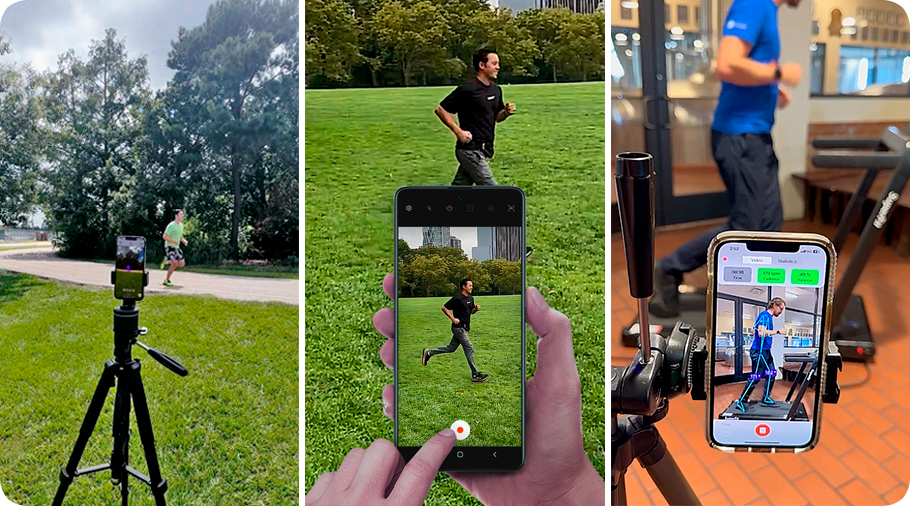
A stable camera setup is essential for clear, precise motion tracking.
👉 Looking to analyze more than just running? Check out our guides on recording videos for jumping and weightlifting to ensure accurate motion tracking for all types of training.
2. Use the Right Recording Equipment
- Minimize Background Distractions – Avoid moving objects, crowds, or reflective surfaces to ensure the AI accurately isolates the runner’s motion.
- Optimize Lighting – Avoid harsh shadows, glare, or dim conditions. Use natural light or evenly distributed artificial lighting.
- Avoid windy or rainy conditions, as they can interfere with both your running and the video clarity.
- Choose the Right Camera – While both front (selfie) and back cameras can be used, the back camera is recommended for higher video quality. Camera: Any high-resolution camera (minimum 1080p with 30 fps or higher) will ensure smooth capture of fast movements.
Following these steps ensures your video is optimized for precise biomechanical analysis with AiKYNETIX.
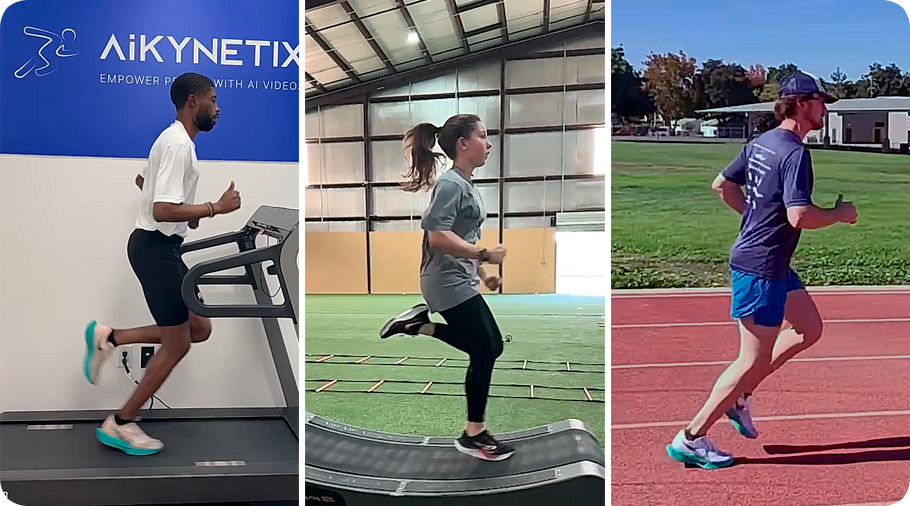
Proper recording conditions ensure the most accurate motion tracking and analysis.
3. Optimal Camera Positioning for Running Analysis
- Camera Height: Position at hip or chest level for accurate motion tracking.
- Maintain Distance: Ensure the entire body is visible in the frame. Exact distance may vary, but aim for a clear and unobstructed view.
- Camera Stability: Use a tripod, rotational pod, or hold the phone by hand to keep the runner in focus.
- Best Angle: Film perpendicular to the runner’s movement to avoid distortions in gait and stride analysis.
📌 Illustration Purpose Only – The image provided serves as a visual guide and does not require exact measurements.

Side-angle positioning allows accurate stride length, cadence, and ground contact analysis.
4. Athlete’s Running Form & Attire
For the most accurate results:
- Run in a straight line, parallel to the camera. Avoid sudden turns or changes in pace.
- The person should be running, not walking!
- For running analysis, the video should be under a minute, ideally around 30 seconds to ensure the AI captures a full gait cycle.
- Wear tight-fitting, contrast-colored clothing (e.g., leggings and a tank top) to clearly define body contours. Avoid loose clothing, which can obscure key points.

Proper attire helps AI recognize joint positions and body movement with precision.
5. Optimize Video Quality for AI Analysis
- Save your video in a widely supported format (MP4, MOV).
- Trim excess footage to start and end with full strides for clean data processing.
- Avoid excessive compression, as it can reduce the clarity of joint tracking.

High-quality video ensures precise motion tracking and biomechanics analysis.
6. Analyze & Improve Your Running Performance
Once your video is processed in an AI-powered app like AiKYNETIX, you can:
✅ View key running metrics – stride length, cadence, ground contact time, and overall efficiency.
✅ Compare session results to track performance over time.
✅ Get AI-driven recommendations to refine technique and reduce injury risks.
✅ View key running metrics – stride length, cadence, ground contact time, and overall efficiency.
✅ Compare session results to track performance over time.
✅ Get AI-driven recommendations to refine technique and reduce injury risks.
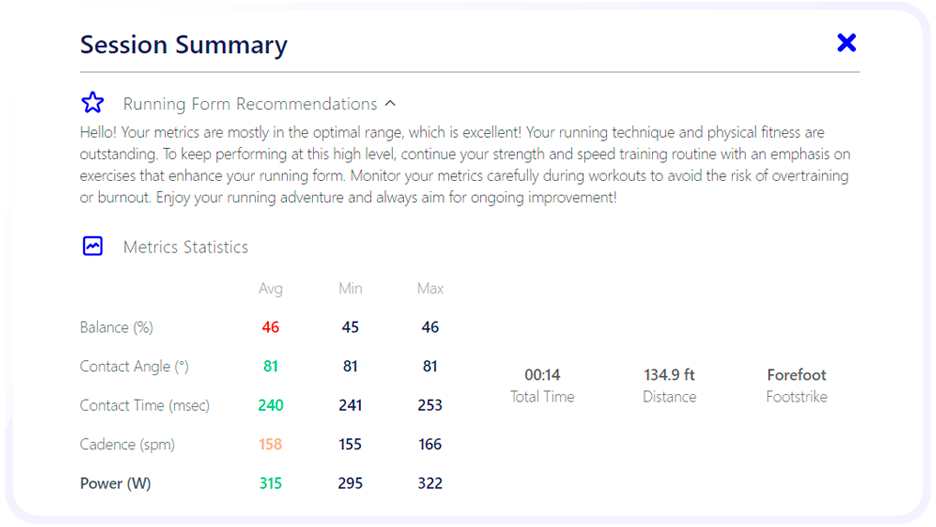
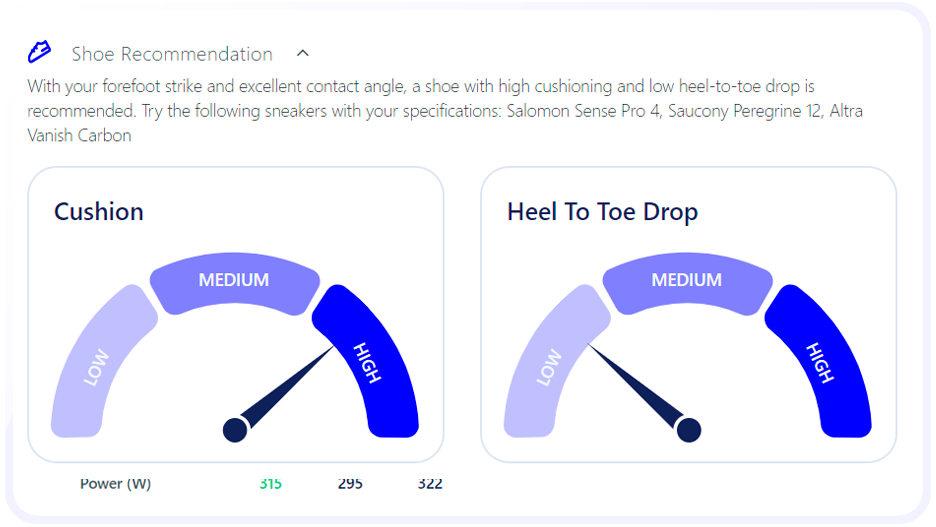
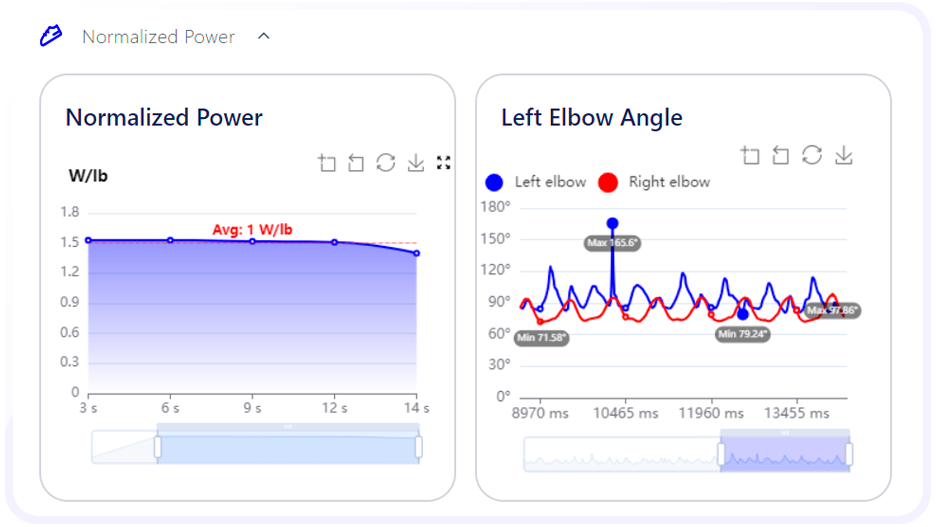
AI-powered motion analysis helps runners enhance performance and prevent injuries.
Why Choose AiKYNETIX Over Other Motion Analysis Methods?
Unlike force plates, wearables, or sensors, which require expensive lab setups, AiKYNETIX uses just a smartphone camera to deliver lab-grade motion insights in under 30 seconds.
✅ No wearables needed – No sensors, straps, or external devices.
✅ Fast and convenient – Analyze your run instantly, anywhere.
✅ Accurate and science-backed – Uses AI, biomechanics, and computer vision for precise assessments.
📌 Example Use Case:
A coach working with a team of runners can record each athlete’s stride once a week and use AiKYNETIX to track progress, spot asymmetries, and adjust training plans accordingly.
✅ No wearables needed – No sensors, straps, or external devices.
✅ Fast and convenient – Analyze your run instantly, anywhere.
✅ Accurate and science-backed – Uses AI, biomechanics, and computer vision for precise assessments.
📌 Example Use Case:
A coach working with a team of runners can record each athlete’s stride once a week and use AiKYNETIX to track progress, spot asymmetries, and adjust training plans accordingly.
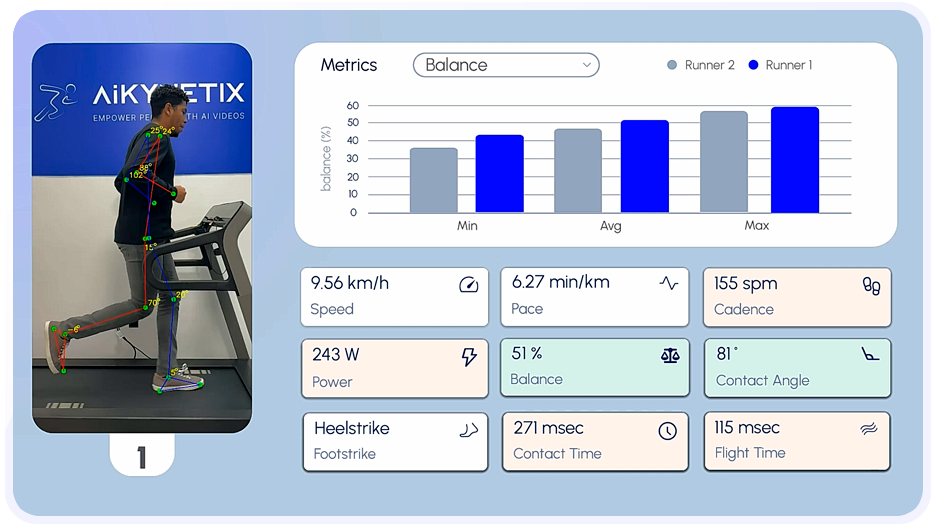
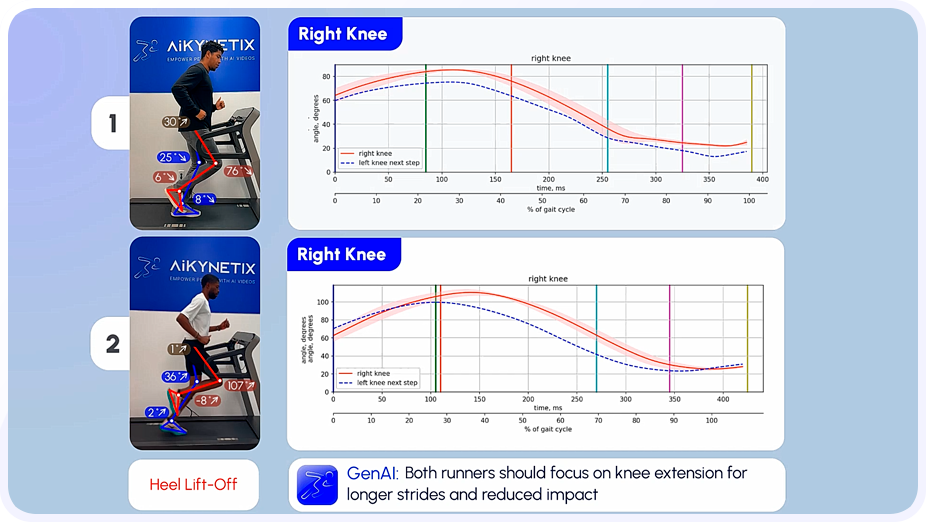
💡 Want to improve more than just your running? Learn how to properly record jumping and weightlifting videos for AI-driven motion analysis and maximize your training results!
Get Started Today!
Properly recorded videos make all the difference in achieving accurate, AI-powered running insights. Whether you're a coach, athlete, or rehab specialist, tools like AiKYNETIX bring cutting-edge sports science right to your phone.
💡 Start optimizing your performance now!
AiKYNETIX Web Platform - advanced features ideal for professionals.
AiKYNETIX IOS App - convenient on-the-go analysis.
💡 Start optimizing your performance now!
AiKYNETIX Web Platform - advanced features ideal for professionals.
AiKYNETIX IOS App - convenient on-the-go analysis.




